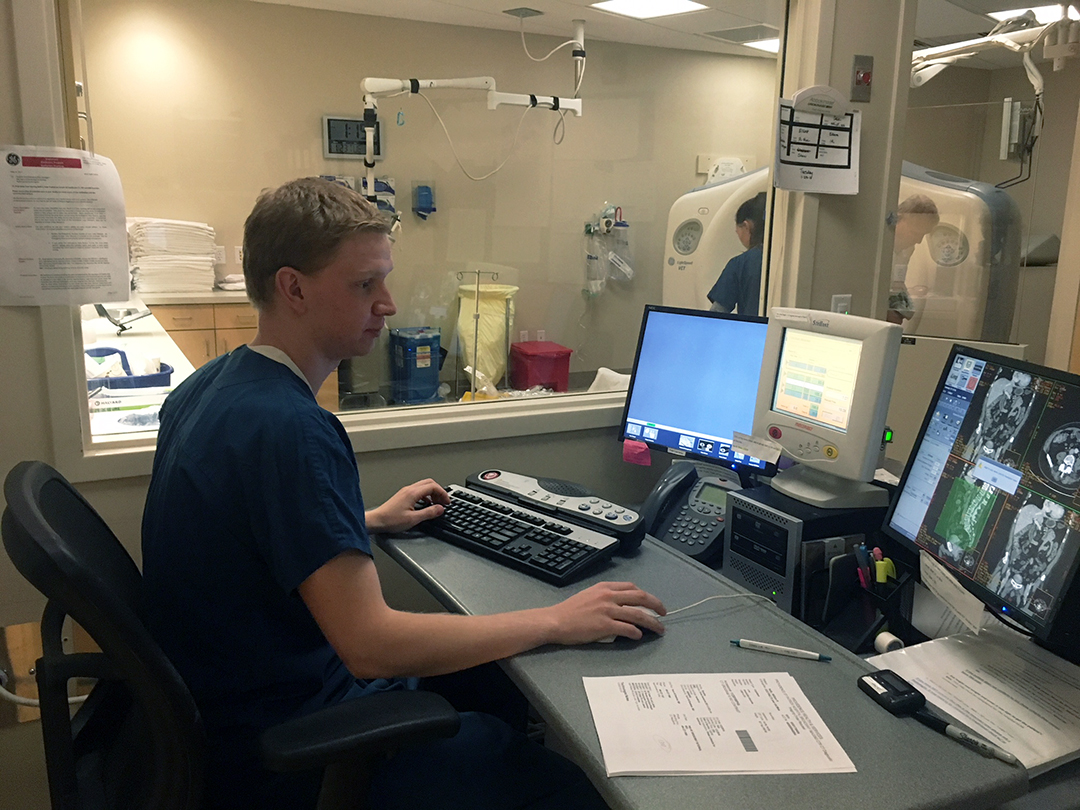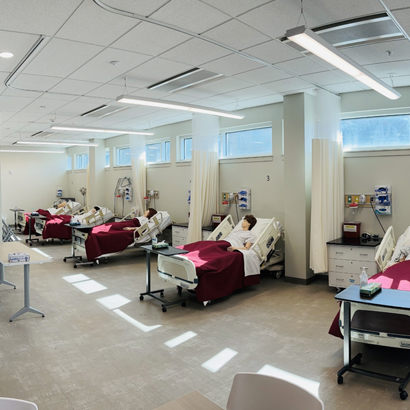Radiologic Technologist
Application Information
- Access the detailed application instructions and the application link, on our Health Professions Programs' Application webpage (https://mc.umt.edu/health/applications).
Victor White, Program Director

Radiology is sometimes called the eyes of medicine, as it reveals the body’s hidden secrets of injury and disease. It follows, then, that Radiologic Technologists (Radiographers) are the photographers who make it possible to see. Employed in hospitals, clinics, or office settings, radiographers use x-radiation to produce images that aid in diagnosis. Our students learn to “think out of the box” to get the pictures doctors need, and they do it with a friendly, respectful, and caring bedside manner.
The Radiologic Technology program approved by the American Registry of Radiologic Technologists (ARRT), and when all requirements for the Associate of Applied Science (AAS) degree are completed, the student will be eligible to take the national certification exam. Upon successful completion, the student becomes a Registered Radiologic Technologist, R.T. (R) ARRT. Additional education and training leads to careers in radiation therapy, computed tomography (CT), mammography, magnetic resonance imaging (MRI), ultrasound, nuclear medicine, and vascular and cardiac imaging. A recent Radiologic Technology alumna even started her own mobile veterinary imaging business!
Program Requirements & Application Process
Applying to the program requires completing the prerequisite courses. Students who have not had an advanced high school Anatomy class are encouraged to begin their pre-requisites over the summer. This allows time for a "warm up" basic anatomy class to prepare for the 200-level Anatomy and Physiology courses.
Program admission is competitive, and students are strongly encouraged to gain some healthcare experience as a CNA, EMT, Medical Assistant, Phlebotomist, etc. before applying. This experience is rewarded in the application process.
Once accepted into the Program, students will complete the AAS Degree in 16 months, graduating at the end of the second Fall semester. The majority of classroom (didactic) courses are completed in the first two semesters. The Program offers separate enrollment tracks for students willing & able to spend April - November at health facilities in either Great Falls or Bozeman. Inquire for details.
The Clinical Experience & Professionalism
Clinical education begins at the end of the first semester with a limited rotation. After Spring Break, however, students begin their intensive clinical training in health facilities, with 30-40 hours/week spent in western Montana hospitals and clinics. Students are also required to rotate to clinical sites outside the Missoula area, including Ronan, Hamilton, Plains, Ronan, and Polson, Montana. Transportation and housing are the student’s responsibility. Given the complexity of scheduling meaningful student rotations, using a limited number of facilities, it is impossible to work around outside jobs unless employers are very flexible.
Because students are placed in facilities for direct patient care experiences, our expectations for professionalism are extremely high! Punctuality, appearance, demonstrating empathy, and using appropriate communication and behavior are critical to success, and feature prominently in student assessment and grading.
Option for Post-graduate Studies
Post-graduate studies are in certain modalities, including CT, Orthopedic Imaging, and Interventional Radiology. For more information, visit the computerized tomography (CT) page, or contact the Program Director.
U.S. Department of Education Notice
The U.S. Department of Education now requires that all programs leading to State Licensure or National Certification must disclose whether or not their program meets the requirements of Licensure in each state.
The Radiologic Technology Program at Missoula College -- UM has not yet made a determination regarding whether our curriculum meets requirements for licensure by examination in states outside of Montana.
Curriculum & Requirements
The University of Montana catalog details degree specific credits and course requirements.
|
Subject |
Type |
|---|---|
|
Associate of Applied Science |
Additionally, the requirements are available on our program handout.
Contact Information
- Victor White, Program Director / Advisor
Email: victor.white@mso.umt.edu
Phone: 406-243-7872
Office: MC 302 - Graham Barnes, Clinical Coordinator
Email: graham.barnes@umontana.edu
Phone: 406-243-7809
Office: MC 307
